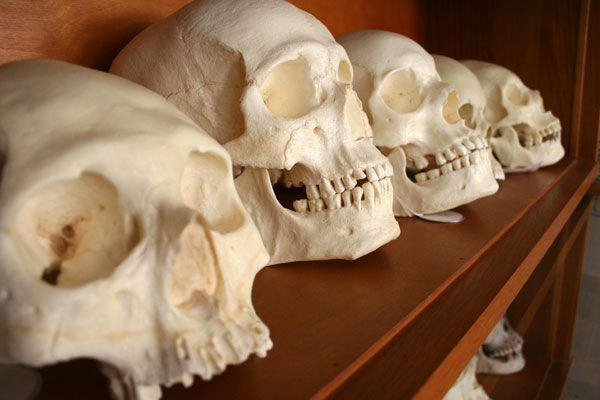Skulls of Spanish Women Grew Over 300 Years

Like his body, a man's skull and its features are generally larger than a woman's. An analysis of Spanish skulls spanning approximately 300 years showed, however, that the difference between the sexes' cranial features shrank over time.
This conclusion is based on examinations of more than 200 crania — the part of the skull that holds the brain — contained in two collections, one amassed during the 19th century by a doctor, and one from an excavated cemetery dating back to the 16th through 17th centuries. While both sexes' crania got bigger, women's grew more, decreasing the gender gap, the researchers found.
There are multiple factors that could explain this change, according to lead researcher Ann Ross, an anthropologist at North Carolina State University. These include changes in nutrition, living conditions and genetic influences on the populations from which the skulls came — the earlier collection came from a more localized population, according to Ross.
The researchers also compared the features of the Spanish crania with a collection from 19th-century Portugal.
The findings may be helpful to forensic anthropologists, who are asked to identify human remains around the world and need to be able to reliably distinguish between males and females. However, a person's ancestry — even being, say, of European lineage versus being a white American — has an important influence on their skeletal features. So, anthropologists need to make sure that they can apply an equation developed to distinguish a male from a female within one population to another population, according to Ross.
By comparing both 19th-century samples, the anthropologists found it very difficult to distinguish Spanish remains from Portuguese skeletons. This led them to conclude that the same equation could be used to distinguish between the sexes for both Spanish and Portuguese remains.
The researchers also looked at differences in the bone structure, such as changes to the teeth sockets, and found that some changes had occurred over time for both men and women. The researchers looked at each cranium as a whole, rather than describing the changes to the individual features. The implications for brain size were outside the scope of the project, according to Ross.
Sign up for the Live Science daily newsletter now
Get the world’s most fascinating discoveries delivered straight to your inbox.
The study appears in a recent issue of the journal Forensic Science International.
You can follow LiveScience writer Wynne Parry on Twitter @Wynne_Parry.












